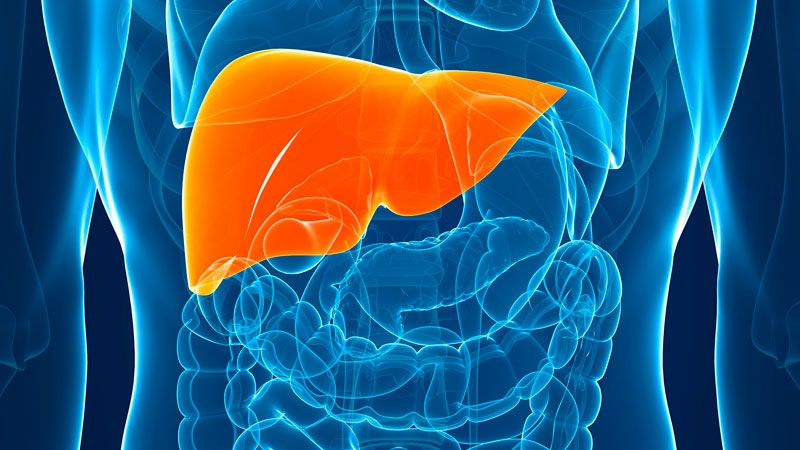New Study Supports Expanded Indication for Lenvatinib in Advanced HCC
Lenvatinib may benefit patients with advanced hepatocellular carcinoma with second- or later-line therapies and a high burden of intrahepatic lesions.

Lenvatinib (Lenvima) offers potential benefits for patients with advanced hepatocellular carcinoma (HCC) with second- or later-line therapies and a high burden of intrahepatic lesions. These are the findings from a new study that set out to verify the possibility of lenvatinib for the expanded indication from the REFLECT trial in patients with advanced HCC in real-world practice. The study, which was published in Liver Cancer, focused mainly on the patient population that had been excluded from the REFLECT trial.1
Of 152 advanced HCC patients, 95 patients (62%) received lenvatinib as first-line therapy, while 57 patients (38%) received the drug as second- or later-line systemic therapy. Child-Pugh class A patients experienced comparable median progression-free survival (PFS), regardless of whether they received lenvatinib as a first- or later-line therapy (First line median PFS: 5.2 months, 95% Confidence Interval [CI] 3.7–6.9; later-line median PFS: 4.8 months, 95% CI 3.8–5.9; P = 0.933).
Among patients with a high baseline burden of intrahepatic lesions (n = 27, 18%), the objective response rate (ORR) was 41%, a similar ORR to other trial populations.
The Child-Pugh class B population (n = 20, 13%) showed high-frequency rates of liver function-related adverse events (AEs) due to lenvatinib. The 8-week dose intensity of lenvatinib had a strong correlation with liver function according to both the Child-Pugh and albumin–bilirubin (ALBI) scores.
“Lenvatinib is expected to be promising and beneficial for patients with advanced HCC requiring second- or later-line therapy and who have a high burden of intrahepatic lesions [but] we cannot recommend lenvatinib for Child-Pugh class B patients on the basis of the results of the present study,” wrote the authors, led by Susumu Maruta, MD, of Chiba University, Chiba, Japan. “Since lenvatinib may be an unexpectedly sensitive drug affected by liver function, more attentive management of lenvatinib dose modification should be considered.”
REFLECT was a phase III randomized open-label noninferiority trial conducted in 20 countries that compared lenvatinib to sorafenib (Nexavar) in first-line treatment of patients with unresectable HCC. Among 954 patients randomized to lenvatinib (n = 478) or sorafenib (n = 476), the median overall survival (OS) for lenvatinib was 13.6 months (95% CI, 12.1–14.9). The median OS for sorafenib was 12.3 months (95% CI, 10.4–13.9; hazard ratio [HR] 0.92, 95% CI 0.79–1.06), which met the authors’ predetermined criteria for noninferiority.2
The present study, which was conducted at 7 institutions in Japan, included mainly patients with Child-Pugh class A status. The authors specifically included patients with Child-Pugh class B status upon physician approval: “According to baseline radiological assessments, 27 patients (18%) had main portal vein and/or bile duct invasion or 50% or higher liver occupation by an intrahepatic tumor and conflicted with the radiological exclusion criteria of the REFLECT trial.” They defined this population as the “high burden of intrahepatic lesions” group.
Patients’ median age was 73 years old and nearly all patients had an ECOG performance status of 0 or 1 (93%). At 45%, hepatitis C virus was the most common etiology, followed by alcohol abuse (25%) and hepatitis B virus (13%). At baseline, 23% of patients had macrovascular invasion, while 38% of patients had extrahepatic metastasis.
The median PFS was 5.1 months (95% CI 4.4–5.9 months), while the median OS was 13.3 months (95% CI, 9.9–16.7 months). The median duration of treatment with lenvatinib was 5.3 months (95% CI, 4.5–6.1 months). The median observation period was 6.7 months (95% CI, 6.2–7.3 months), by the end of which 95 patients (62%) had discontinued lenvatinib. Disease progression was the most common reason for discontinuation at 38% (n = 58), while AEs were the next most common at 21% (n = 32).
The most common AEs were hypothyroidism and anorexia (n = 63, 41% each). The most common grade 3 or higher AE were hypertension (n = 11, 7%), elevated aspartate transaminase (AST; n = 11, 7%), and proteinuria (n = 10, 6%). During follow-up, nearly 80% of patients (n = 120, 79%) required lenvatinib dose reductions due to AEs. The three most common causes of dose reductions were anorexia (n = 33, 22%), fatigue (n = 24, 16%), and encephalopathy (n = 18, 12%).
Maruta et al note that the incidence of HCC is expected to dramatically increase in upcoming decades, especially in East and South Asia. They remain hopeful that lenvatinib may be a promising agent for use in patients with advanced HCC with a high burden of intrahepatic lesions. “Although our study included a [lower] number of patients with advanced HCC with a high burden of intrahepatic lesions, further prospective or large cohort retrospective studies should be required to confirm the safety and efficacy of lenvatinib in this group,” they wrote.
References:
1. Maruta S, Ogasawara S, Ooka Y, et al. Potential of Lenvatinib for an Expanded
Indication from the REFLECT Trial in Patients with Advanced Hepatocellular Carcinoma. Liver Cancer. Published online May 5, 2020. DOI: 10.1159/000507022
2. Kudo M, Finn RS, Qin S, et al. Lenvatinib versus sorafenib in first-line treatment of patients with unresectable hepatocellular carcinoma: a randomised phase 3 non-inferiority trial. Lancet. 2018;391(10126):1163-1173. Published online February 9, 2018. doi:10.1016/S0140-6736(18)30207-1.
FDA Accepts NDA Resubmission of Rivoceranib and Camrelizumab in HCC
October 21st 2024The new drug application resubmission of rivoceranib/camrelizumab in the first line in unresectable or metastatic hepatocellular carcinoma is supported by the final survival analysis of CARES-310 trial.
Read More